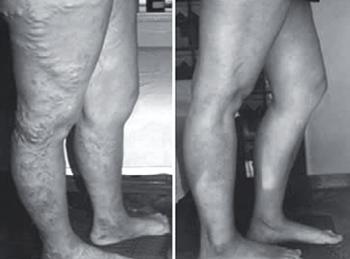Superficial Reflux Disease
Healthy leg veins contain valves that open and close to assist return of blood to the heart. Venous reflux disease develops when the valves that keep blood flowing out of the legs and back to the heart become damaged or diseased. As a result, vein valves will not close properly, leading to symptoms of:
-
Pain and swelling
-
Leg heaviness, fatigue, and cramping
-
Itching and burning
-
Varicose veins
-
Skin changes and leg ulcers
Varicose Veins
Varicose veins are abnormal veins that can occur in the legs. They can appear as small, thin purple-colored lines (called "spider veins") that lie just below the skin surface, or they can be thick, bulging or knotty veins. While many people think that varicose veins are simply a cosmetic issue, there is in fact often an underlying medical problem that causes varicose veins. This medical condition is called venous reflux disease.

Take A Look At Our Successful Results!
Spider Veins
Spider veins are a type of varicose veins. They are small dilated blood vessels near the surface of the skin. They can develop anywhere on the body, including the legs, specifically on the upper thigh, below the knee joint, and around the ankles. While many people think that varicose veins are simply a cosmetic issue, there is in fact often an underlying medical problem that causes varicose veins. This medical condition is called venous reflux disease.

